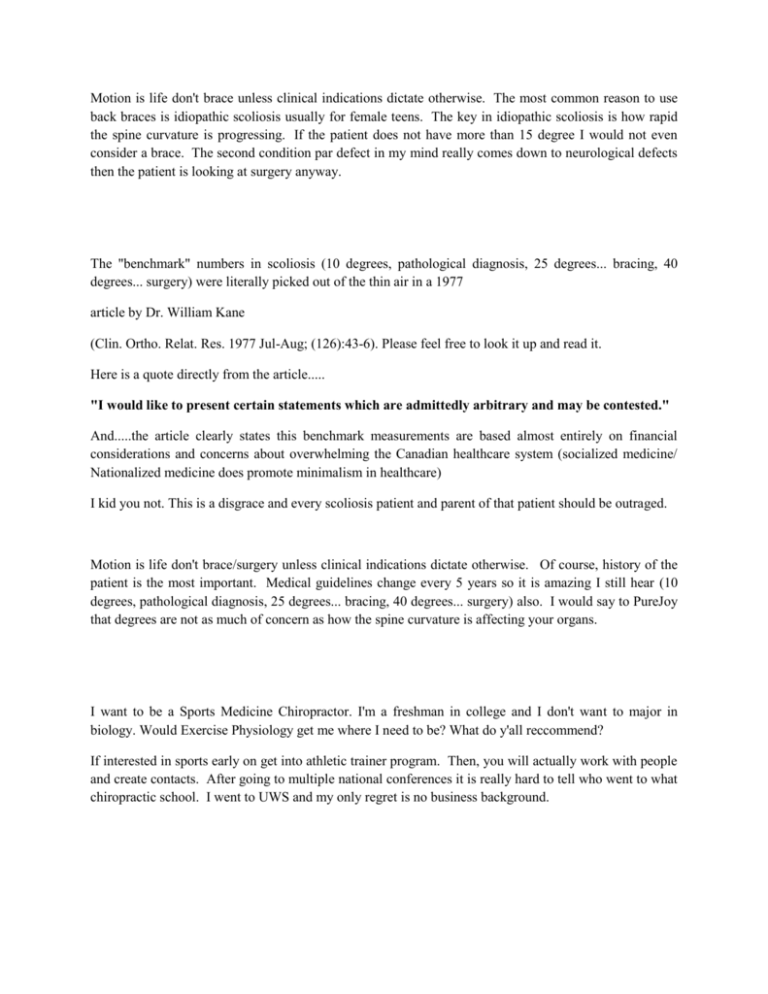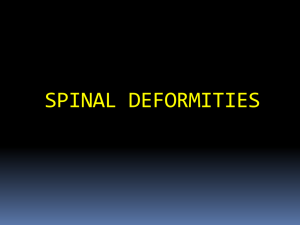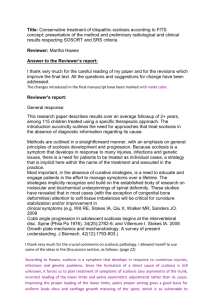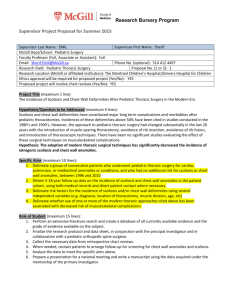Motion is life don`t brace unless clinical indications dictate
advertisement

Motion is life don't brace unless clinical indications dictate otherwise. The most common reason to use back braces is idiopathic scoliosis usually for female teens. The key in idiopathic scoliosis is how rapid the spine curvature is progressing. If the patient does not have more than 15 degree I would not even consider a brace. The second condition par defect in my mind really comes down to neurological defects then the patient is looking at surgery anyway. The "benchmark" numbers in scoliosis (10 degrees, pathological diagnosis, 25 degrees... bracing, 40 degrees... surgery) were literally picked out of the thin air in a 1977 article by Dr. William Kane (Clin. Ortho. Relat. Res. 1977 Jul-Aug; (126):43-6). Please feel free to look it up and read it. Here is a quote directly from the article..... "I would like to present certain statements which are admittedly arbitrary and may be contested." And.....the article clearly states this benchmark measurements are based almost entirely on financial considerations and concerns about overwhelming the Canadian healthcare system (socialized medicine/ Nationalized medicine does promote minimalism in healthcare) I kid you not. This is a disgrace and every scoliosis patient and parent of that patient should be outraged. Motion is life don't brace/surgery unless clinical indications dictate otherwise. Of course, history of the patient is the most important. Medical guidelines change every 5 years so it is amazing I still hear (10 degrees, pathological diagnosis, 25 degrees... bracing, 40 degrees... surgery) also. I would say to PureJoy that degrees are not as much of concern as how the spine curvature is affecting your organs. I want to be a Sports Medicine Chiropractor. I'm a freshman in college and I don't want to major in biology. Would Exercise Physiology get me where I need to be? What do y'all reccommend? If interested in sports early on get into athletic trainer program. Then, you will actually work with people and create contacts. After going to multiple national conferences it is really hard to tell who went to what chiropractic school. I went to UWS and my only regret is no business background. She referred me to a neurosurgeon, who took a look at my MRI and report and is recommending T3 and T6 laminectomy. Based on some research, it seems like laminectomy in the thoracic region is much less common than elsewhere. I plan on getting a second opinion (heck, maybe even a third!). I guess what I am asking is whether the laminectomy is the best course of action, and what is the urgency of getting this taken care of - I can deal with the pain, etc. but I do not want to risk causing more damage! Also - if anyone can recommend a good neuro in the Seattle area it would be appreciated True laminectomy in the thoracic region is less common, but the main question is how is the ligamentum flavum calcificaion is affecting your nerves. Usually, the first sign of nerve compression is tingly. When a patient gets muscle weakness or spinal cord signs then permanent damage can occur. Here is the tough part there is nothing you can do besides contact your attorney. Unfortunately, your insurance carrier is not necessary on your side. The insurance company wants to protect themselves. As a health care provider, I see cases all the time where no vehicle damage happened and the patient gets hurt. The insurance company will flag the cases if a claim is filed. Worse case the driver needs neck surgery they will settle for the max because the insurance company can rarely win with neck surgery and they will not go after you. No reason to worry about events that you can't influence. Hi Greg, Mckenize protocol is the gold standard for disc problems. So the key is finding a movement that centralizes the numbness in the foot so it moves toward the back. Long term weakness can cause permanent effects. Get some kind of manual therapy right away. If PT/Chiropractic does not improvement your condition then get consultation with neurosurgeon. Unfortunately, corset do not help scoliosis or anybody. In the 80-90s, large companies were requiring blue collar workers to use back belts. Tons of work comp. studies have shown back belts don't prevent injuries and had a small increase with injuries. Braces for scoliosis are very specialized and should only be used if your spinal curve is beyond 20 degrees or progressing rapidly.











